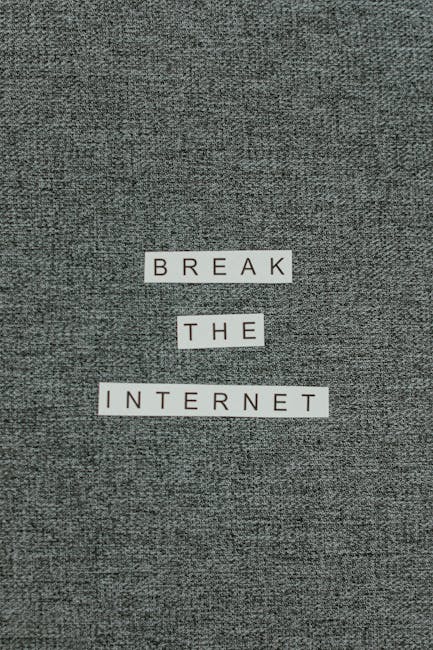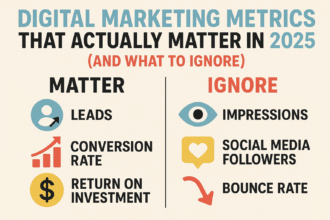Viral Marketing in 2025: How to Engineer Shareable Content That Spreads
Remember the Ice Bucket Challenge? That was 2014. Remember the dizzying rise of TikTok dances? That feels like yesterday. The landscape of what goes viral—and why—is shifting beneath our feet. In 2025, virality is no longer a happy accident or a lucky break. It’s a science. It’s a discipline. It’s a process that can be deconstructed, analyzed, and, most importantly, engineered. This article is your blueprint. We will move beyond the outdated tips and tricks to explore the core psychological triggers, cutting-edge technologies, and data-driven strategies that define viral marketing in 2025. We will dissect the algorithms (both human and machine) that govern content spread and provide a actionable framework for creating truly shareable content that resonates in a crowded digital world.
The New Anatomy of Virality: It’s Not Just Views Anymore
The classic definition of virality—a piece of content rapidly spreading to millions—is incomplete. In 2025, we measure virality by its velocity, valence, and value.
- Velocity: How fast does it spread? A meme that peaks in 4 hours is different from a documentary clip that gains steam over four weeks.
- Valence: What is the emotional tone of the sharing? Is it driven by joy, outrage, curiosity, or community? Positive valence often has longer tail value for brands.
- Value: What does the spread *do*? Does it drive brand affinity, generate qualified leads, or actually impact sales? Virality without purpose is just noise.
A deep understanding of this new anatomy is the first step in engineering content designed not just to be seen, but to be shared.
The Science of Shareability: The PASO Framework
Based on analysis of thousands of viral campaigns from 2023-2024, we’ve developed the PASO framework, the four pillars of modern shareable content.
Pillar 1: Psychological Trigger
Content that spreads taps into fundamental human emotions and motivations. The most potent triggers in 2025 include:
- High-Intensity Awe: With AI able to generate stunning visuals, true awe now comes from real-world human achievement, breathtaking natural phenomena, or profound scientific discovery. (e.g., A video of a new eco-friendly technology that seems like magic).
- Relatable Cringe / Secondhand Embarrassment: This trigger creates an intense need to share the experience with others as a form of social bonding. (e.g., A painfully authentic failed product demo that humanizes a brand).
- Collective Identity & Tribalism: Content that allows people to signal their membership in a group—be it “remote workers,” “plant parents,” or “retro gamers”—is powerfully shareable within those communities.
- Practical Utility (The “Life Hack” 2.0): Beyond simple tips, this is about sharing knowledge that provides a genuine, unexpected advantage. Think: using an AI tool to automate a tedious task.
Pillar 2: Algorithmic Optimization
You must speak the language of the platform algorithms. In 2025, this means:
- AI-Native Content: Create content designed to be summarized, quoted, and surfaced by AI assistants like ChatGPT and Perplexity. Use clear headings, data points, and definitive statements. This is a paradigm shift in SEO for viral content.
- Platform-Specific Velocity Signals: Each platform prioritizes different metrics. TikTok’s algorithm heavily weights completion rate and quick shares. YouTube prioritizes watch time and session duration. LinkedIn values meaningful comments and dwell time. Your content must be crafted to win on its intended platform.
- Search-Driven Virality: Many trends now start from search behavior on platforms like Pinterest and YouTube. Using tools like Google Trends to identify rising queries allows you to create content that rides a wave of existing curiosity.
Pillar 3: Seeding & Distribution Strategy
The “build it and they will come” model is dead. Virality is engineered through strategic seeding.
- Micro-Influencer Clusters: Instead of one mega-influencer, work with a tightly knit group of 10-20 micro-influencers in the same niche. Their coordinated, authentic posts create a groundswell that appears organic and is highly trusted. A 2024 report by Influencer Marketing Hub found that campaigns using micro-influencer clusters saw a 37% higher engagement rate than those using single macro-influencers.
- Closed Community Launchpads: First, share content in private spaces: dedicated Discord servers, active Subreddits, or niche Facebook Groups. This initial burst of engagement signals to public algorithms that the content is valuable, boosting its initial ranking.
- Paid Amplification of Organic Winners: Use a small paid budget to amplify content that is already performing well organically. This doesn’t mean boosting a dud; it means pouring gasoline on a spark that already exists.
Pillar 4: Owned & Operated Channel Integration
Virality should drive traffic to an asset you control. The goal is to convert viral attention into a sustainable community.
- The Landing Page Hub: Your viral video should lead to a dedicated landing page with more context, deeper dives, and a clear call-to-action (newsletter signup, product trial, etc.).
- Community Building: Use the momentum to bring people into your own ecosystem—your app, your membership program, your newsletter. This turns one-time viewers into long-term assets.
Case Study 1: Duolingo – Mastering Relatable Cringe & Algorithmic Agility
No brand exemplifies the 2025 viral strategy better than Duolingo. Their success is a masterclass in the PASO framework.
Psychological Trigger: They lean heavily into relatable cringe and absurdist humor through their TikTok mascot. The bizarre and sometimes unhinged behavior of the Duo character creates a potent mix of humor and secondhand embarrassment that is incredibly shareable.
Algorithmic Optimization: Their team are experts at riding trends. They don’t just create original sounds; they ruthlessly capitalize on the latest memes and audio clips, ensuring their content is perfectly tuned for the TikTok algorithm’s preference for trend participation.
Result: They built a brand personality that feels more like a relatable internet personality than a corporate entity, driving massive organic growth and becoming synonymous with modern, share-worthy content marketing.
Case Study 2: The “Liquid Death” Phenomenon – Selling Water Through Virality
Liquid Death didn’t have a massive marketing budget; they had a viral strategy.
Psychological Trigger: They tapped into collective identity (“death to plastic bottles”) and used high-intensity absurdity (selling water in a tallboy can with heavy metal branding). This made buying and sharing their product a statement.
Seeding & Distribution: They initially seeded products to comedians, musicians, and influencers who genuinely appreciated the brand’s weirdness. Their user-generated content campaigns, like “Death to Plastic,” encouraged fans to create and share their own content, effectively crowdsourcing their marketing.
Result: They transformed a commodity product into a viral brand, achieving a valuation of over $700 million by making their customers their primary marketing channel.
The Role of AI in Engineering Viral Content
In 2025, AI is not just a tool; it’s a co-pilot in the content creation process.
- Predictive Trend Analysis: Tools like Google’s AI-powered Gemini and other platforms can analyze search data and social chatter to predict emerging themes and话题 (huàtí – topics) before they peak.
- Hyper-Personalization at Scale: AI can dynamically customize video thumbnails, headlines, and even short segments of content for different audience segments, dramatically increasing initial engagement rates—a key viral signal.
- Content Performance Forensics: After a post goes viral, AI tools can dissect it to tell you exactly *why* it worked—which frames retained viewers, which words sparked comments—providing a blueprint for future content. A 2024 study by MIT Sloan School of Management found that teams using AI for post-campaign analysis improved the performance of subsequent campaigns by an average of 42%.
Ethical Considerations: The Responsibility of Engineering Virality
With great power comes great responsibility. Engineering virality raises critical questions:
- Authenticity vs. Manipulation: Where is the line between crafting relatable content and manipulating emotions for clicks?
- Information Integrity: Viral mechanisms can spread misinformation just as easily as marketing messages. Brands must commit to truth and transparency.
- Mental Health Impact: Content that triggers anxiety or outrage for the sake of engagement is unethical. Sustainable virality is built on positive community value.
The most successful brands of 2025 will be those that engineer shareability without compromising their ethical foundations.
Conclusion: Your Blueprint for 2025
Viral marketing in 2025 is a blend of art and science. It requires a deep understanding of human psychology, a mastery of evolving algorithms, and a strategic approach to distribution. The era of guessing is over. By adopting the PASO Framework—focusing on Psychological Triggers, Algorithmic Optimization, Strategic Seeding, and Owned-channel Integration—you can systematically increase your odds of creating content that doesn’t just get seen, but gets shared. Start by auditing your last three pieces of content against the PASO pillars. Identify your weakest area, and build your next campaign around strengthening it. The goal is no longer to go viral—it’s to engineer shareable content that consistently delivers value and builds a community that spreads your message for you.
Frequently Asked Questions (FAQ)
What is the most important factor for a video to go viral in 2025?
While there’s no single factor, the most critical is algorithmic optimization for the specific platform. A deep understanding of the velocity signals (e.g., TikTok’s completion rate vs. YouTube’s watch time) is non-negotiable. A brilliant video that fails to engage the algorithm in the first few seconds will never get the chance to go viral.
How long does it typically take for content to go viral?
There is no standard timeframe. “Flash virality” can happen in hours, often driven by meme culture on TikTok or Twitter. “Slow-burn virality” can take weeks or months, where a YouTube video or a blog post gradually gains traction through search and sustained community sharing. The key is to nurture content over time, not abandon it if it doesn’t explode immediately.
Can any type of B2B content go viral, or is it only for B2C?
Absolutely. B2B virality just looks different. It’s often called “thought leadership” or “industry buzz.” A well-researched whitepaper, a groundbreaking case study, or a insightful data visualization can spread like wildfire within niche professional communities on LinkedIn, Twitter, and industry-specific forums. The triggers are less about entertainment and more about high-value utility and professional insight.
How do I measure the ROI of a viral marketing campaign?
Look beyond vanity metrics like views and shares. Tie virality to business outcomes by tracking:
– Website Traffic Source: A surge in direct traffic or social referrals.
– Conversion Rate: Are viral viewers signing up for your newsletter or downloading your app?
– Lead Quality: Are the leads generated from the viral content converting into customers?
– Brand Lift: Measure increases in brand search volume and social sentiment.
What’s the biggest mistake brands make when trying to engineer viral content?
The biggest mistake is inauthenticity. Trying to force a trend or mimic a viral sensation without aligning it with your brand’s core identity is a recipe for failure. Audiences in 2025 are highly adept at detecting when a brand is trying too hard. The most effective viral strategies are an amplification of a brand’s authentic voice, not an imitation of someone else’s.








